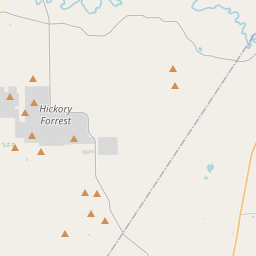1835 Attack at Sandies Water Hole













1835 ATTACK AT SANDIES WATER HOLE
NATIVE AMERICAN RAIDS WERE A MAJOR CONCERN OF DEWITT’S COLONY, WHICH SETTLED IN THIS AREA AFTER ITS 1825 ESTABLISHMENT. TO PROTECT THE COLONISTS, GREEN DeWITT BUILT A FORT IN GONZALES AND REQUESTED TROOPS AND A CANNON FROM MEXICAN AUTHORITIES. IN 1835, A PARTY OF THIRTEEN FRENCH AND MEXICAN TRADERS, EN ROUTE FROM NATCHITOCHES, LOUISIANA TO MEXICO, CAMPED AT SANDIES WATER HOLE (1 mi. E). A LARGE GROUP OF WHAT IS BELIEVED TO BE COMANCHE ATTACKED THE PARTY. THE ENGAGEMENT LASTED SEVERAL HOURS, RESULTING IN THE DEATH OF ALL THIRTEEN MEN. THE COLONISTS DID NOT RECEIVE FURTHER PROTECTION FROM THE MEXICAN GOVERNMENT, AND ATTACKS CONTINUED AT SANDIES WATER HOLE INTO TEXAS STATEHOOD.
(2010)
As one of the most visible programs of the Texas Historical Commission (THC), historical markers commemorate diverse topics in Texas history, including: the history and architecture of houses, commercial and public buildings, religious congregations, and military sites; events that changed the course of local and state history; and individuals who have made lasting contributions to the state, community organizations, and businesses.
Texas is also home to the world's largest honky-tonk, Billy Bob's Texas in Fort Worth. The venue covers three acres and can hold up to 6,000 people.
Following the Texas Revolution and the establishment of the Republic of Texas, Gonzales County played a vital role in the formation of the new state. The town of Gonzales became the capital of DeWitt County and remained a prominent center for trade and agriculture. The 1850s brought an influx of German immigrants to the area, who brought with them their agricultural expertise and helped to further develop the county's economy.
During the Civil War, Gonzales County primarily sided with the Confederacy, and many residents served in the Confederate Army. After the war, the county faced a period of reconstruction and struggled with political and economic challenges. However, through the late 19th and early 20th centuries, the discovery of oil and the expansion of the cattle industry brought renewed growth and prosperity to Gonzales County.
Today, Gonzales County remains a vibrant community with a mix of agriculture, oil and gas production, and diverse industries. The county is also known for its rich cultural heritage, including historical sites and the annual reenactment of the Battle of Gonzales. The county's history is celebrated and preserved through museums, historical markers, and the pride of its residents in their shared past.
Gonzales County Timeline
This timeline provides a glimpse into the major events and milestones that have shaped the history of Gonzales County, Texas.
- 1834 - Gonzales County established as a municipality of Mexico
- 1835 - "Come and Take It" cannon skirmish occurs in Gonzales, marking the start of the Texas Revolution
- 1836 - Texas gains independence from Mexico; Gonzales County becomes part of the Republic of Texas
- 1846 - Texas becomes a state, and Gonzales County remains a political subdivision
- 1861-1865 - Gonzales County residents participate in the American Civil War
- 1878 - The Gonzales Inquirer, the oldest continuously published weekly newspaper in Texas, is established
- 1887 - Gonzales County Courthouse is built
- 1891 - The Harwood and Gonzales Railway connects Gonzales to the Texas railway network
- 1905 - Oil is discovered in Gonzales County, leading to an economic boom
- 1936 - The Gonzales Warm Springs Rehabilitation Center, now the J.B. Wells Park, opens as a medical facility for polio patients
- 1949 - The Gonzales Memorial Museum is established to preserve local history
- 1967 - The Gonzales State School opens to serve individuals with intellectual and developmental disabilities
- 1988 - The Confederate Soldiers Monument is erected in the Gonzales Memorial Museum